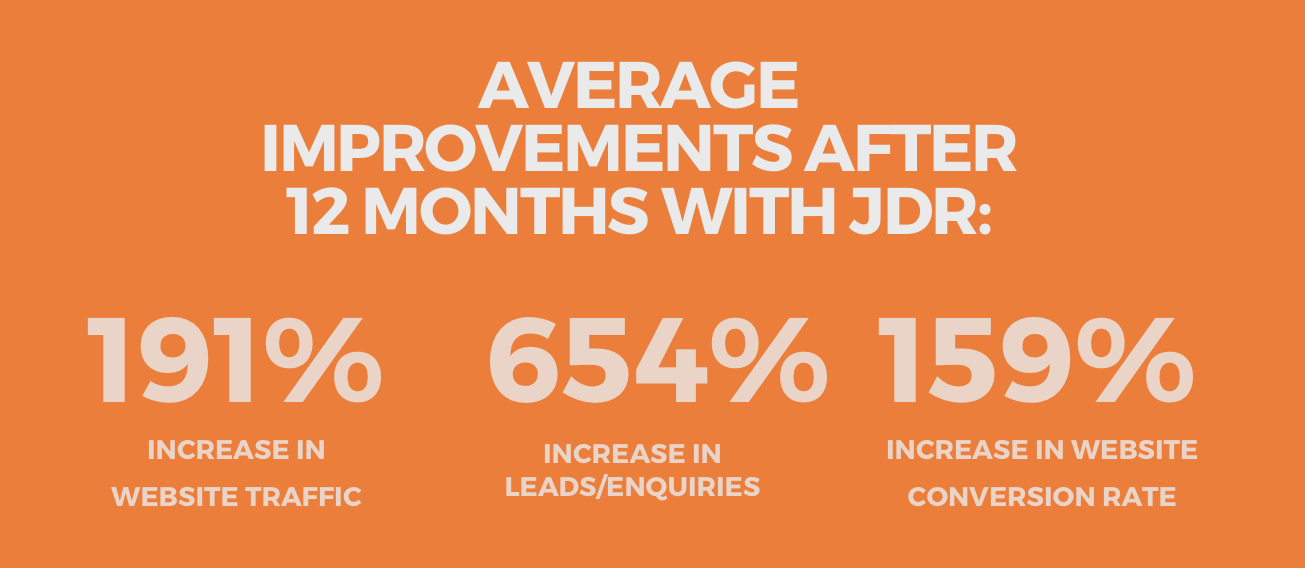Increasing SME Sales: Navigating The Path To Growth
by Andy Gibbins on 31-Aug-2023 12:00:00

When it comes to driving growth for your SME business, there are two key paths to consider: new business sales and existing customer sales/customer retention. By implementing a concerted and effective marketing and sales strategy in both these areas, you can achieve a significant uptick in both sales and overall revenue. In this article, we’ll look at each of these parts in turn and explore some actionable strategies for each.
1. New Business Sales
New business sales encompasses the full process of acquiring new customers for their first purchase and is the main preoccupation for most sales-focused business owners and sales teams.
Making new sales involves actively seeking out potential buyers who have not previously engaged with your services and products and convincing them to make a purchase. Success in new business sales enables SMEs to expand their customer base, increase revenue, and drive overall growth while lowering operational risk.
Attracting new sales is also the area of marketing that many SME owners find the most problematic, so what strategies can you deploy to increase your success rate?
A. Use Data To Define Your Ideal Buyers And Target Market
The wealth of data available to business owners in 2023 enables SMEs to focus on extremely specific buyer segments. Rather than simply marketing to ‘finance directors in Surrey’, marketing data now allows you to go beyond basic demographic information to find out more about your target buyer’s interests, pain points, purchase motivations, how they like to communicate, the online communities they engage with, and much more. This helps you create more relevant, valuable, and ultimately successful content for your target buyers, delivering greater search engine visibility and more conversions.
B. Plan For Change
One of the central lessons of the pandemic for SMEs was that the economic landscape is more vulnerable and more subject to change than anyone would previously have imagined. Use this insight as a strength by actively planning for changing circumstances within your sales and marketing strategy. Be prepared to change course in the way you present your USP, core marketing messages, and value proposition, and appreciate that the needs and motivations of your customers may also change – perhaps rapidly. Planning for change in this way will help you remain relevant and resilient in an evolving marketplace.
C. Develop A Strong And Deeply Personal Value Proposition
Differentiate your business from other companies in your sector by clearly articulating the ways in which your products and services address the pain points and challenges faced by your ideal customers. This is your unique value proposition. The way you express your value proposition in your content may change over time, but there should also be consistency and continuity in the way you highlight the advantages and benefits customers gain by choosing you over another business. This helps cultivate a stronger and more consistent brand identity that reinforces trust in your business among prospects.
2. Customer Retention – Increasing Customer Lifetime Value
Spending all your time and money securing single-purchase customers who never darken your door again is an exhausting and disheartening way of running a business, and isn’t a sustainable path to growth. Once you’ve got your customers, you want them to stick around long-term, so it is equally important for SME owners to focus on retaining existing customers and increasing their lifetime value. Here are some strategies to consider:
Upselling
Identify opportunities to offer additional supporting products and services to your existing customers that increase the value (for them and you) of their initial purchase. By upselling in this way, you not only increase the worth of each transaction but also strengthen customer loyalty by making future purchases more likely.
Cross-Selling
Cross-selling involves suggesting related or complementary products to your customers during the purchasing process. This can increase average order value and expose customers to a wider range of offerings, and also shows that you care by demonstrating that you are invested in making the customers’ lives easier long-term through an ever-evolving service relationship.
Customer Loyalty Incentives
Don’t reserve all your best offers for new customers – implement an attractive loyalty programme or incentive scheme that rewards existing customers for their repeat business. This could include personalised discounts, VIP access to new product or service launches, priority access to your consultants, or exclusive perks for loyal customers. Find out what your customers value the most and build your loyalty scheme around this.
Putting Customers First
A business relationship is a two-way street, so show that you prioritise customer satisfaction by actively seeking feedback on ways that you can improve customer service. By demonstrating this commitment to the success of your customers and genuinely listening, you can help foster long-term business relationships and encourage repeat purchases.
Next Steps
Get in touch with JDR Group today to find out how you can supercharge your sales strategy and develop greater value from both new and existing customers. We can help you assess your current sales and customer retention efforts, identify areas for improvement, and help you develop a comprehensive plan tailored to the specific needs of your business and its customers.
Image Source: Canva
- Inbound Marketing (SEO, PPC, Social Media, Video) (823)
- Strategy (361)
- Sales & CRM (193)
- Marketing Automation & Email Marketing (190)
- Business Growth (162)
- Website Design (160)
- Hubspot (137)
- Lead Generation (115)
- Google Adwords (98)
- Content Marketing (94)
- Conversion (48)
- Case Studies (47)
- News (47)
- Ecommerce (39)
- Webinars (34)
- SEO (24)
- AI (19)
- Events (19)
- Video (17)
- LinkedIn Advertising (15)
- Video Selling (15)
- Software training (13)
- Niche business marketing (11)
- The Digital Prosperity Podcast (10)
- Facebook Advertising (6)
- HubSpot Case Studies (5)
- December 2025 (7)
- November 2025 (6)
- October 2025 (17)
- September 2025 (16)
- August 2025 (14)
- July 2025 (14)
- June 2025 (5)
- May 2025 (19)
- April 2025 (15)
- March 2025 (13)
- February 2025 (13)
- January 2025 (8)
- December 2024 (2)
- November 2024 (4)
- October 2024 (21)
- September 2024 (4)
- August 2024 (8)
- July 2024 (14)
- June 2024 (16)
- May 2024 (25)
- April 2024 (15)
- March 2024 (18)
- February 2024 (5)
- January 2024 (10)
- December 2023 (6)
- November 2023 (10)
- October 2023 (13)
- September 2023 (12)
- August 2023 (14)
- July 2023 (13)
- June 2023 (14)
- May 2023 (15)
- April 2023 (13)
- March 2023 (14)
- February 2023 (13)
- January 2023 (15)
- December 2022 (13)
- November 2022 (6)
- October 2022 (8)
- September 2022 (22)
- August 2022 (15)
- July 2022 (13)
- June 2022 (16)
- May 2022 (14)
- April 2022 (16)
- March 2022 (17)
- February 2022 (11)
- January 2022 (8)
- December 2021 (6)
- November 2021 (7)
- October 2021 (11)
- September 2021 (10)
- August 2021 (7)
- July 2021 (7)
- June 2021 (4)
- May 2021 (4)
- April 2021 (1)
- March 2021 (3)
- February 2021 (5)
- January 2021 (4)
- December 2020 (7)
- November 2020 (6)
- October 2020 (5)
- September 2020 (9)
- August 2020 (18)
- July 2020 (17)
- June 2020 (17)
- May 2020 (10)
- April 2020 (21)
- March 2020 (24)
- February 2020 (21)
- January 2020 (12)
- December 2019 (23)
- November 2019 (12)
- October 2019 (14)
- September 2019 (16)
- August 2019 (15)
- July 2019 (13)
- June 2019 (6)
- May 2019 (8)
- April 2019 (4)
- March 2019 (2)
- February 2019 (2)
- January 2019 (2)
- December 2018 (3)
- November 2018 (24)
- September 2018 (11)
- August 2018 (9)
- June 2018 (3)
- May 2018 (6)
- April 2018 (14)
- March 2018 (12)
- February 2018 (16)
- January 2018 (15)
- December 2017 (15)
- November 2017 (18)
- October 2017 (23)
- September 2017 (19)
- August 2017 (28)
- July 2017 (27)
- June 2017 (25)
- May 2017 (18)
- April 2017 (17)
- March 2017 (16)
- February 2017 (17)
- January 2017 (14)
- December 2016 (21)
- November 2016 (27)
- October 2016 (25)
- September 2016 (16)
- August 2016 (20)
- July 2016 (19)
- June 2016 (14)
- May 2016 (20)
- April 2016 (24)
- March 2016 (22)
- February 2016 (28)
- January 2016 (27)
- December 2015 (28)
- November 2015 (19)
- October 2015 (9)
- September 2015 (12)
- August 2015 (5)
- July 2015 (1)
- June 2015 (10)
- May 2015 (3)
- April 2015 (11)
- March 2015 (14)
- February 2015 (15)
- January 2015 (12)
- December 2014 (2)
- November 2014 (23)
- October 2014 (2)
- September 2014 (2)
- August 2014 (2)
- July 2014 (2)
- June 2014 (7)
- May 2014 (14)
- April 2014 (14)
- March 2014 (7)
- February 2014 (2)
- January 2014 (7)
- December 2013 (9)
- November 2013 (14)
- October 2013 (17)
- September 2013 (3)
- August 2013 (6)
- July 2013 (8)
- June 2013 (4)
- May 2013 (3)
- April 2013 (6)
- March 2013 (6)
- February 2013 (7)
- January 2013 (5)
- December 2012 (3)
- November 2012 (2)
- September 2012 (1)
Subscribe by email
You May Also Like
These Related Blogs

Work With JDR Group: Increase Your Website Traffic By 191% & Lead Generation By 654% In Just 12 Months
Over the course of 14 years we have worked on hundreds, even thousands of marketing campaigns - ranging from traditional outbound campaigns (telemarke …

Revolutionise Your SME: Sales Tactics For Sustainable Growth
Running an SME business can be tough, particularly when it comes to making sales. Small businesses are usually short-staffed, so directors are often f …

How To Use Content Marketing To Elevate & Grow Your Business
Content marketing is an essential digital tool for small business owners looking to boost their business recognition and credibility online, drive web …




